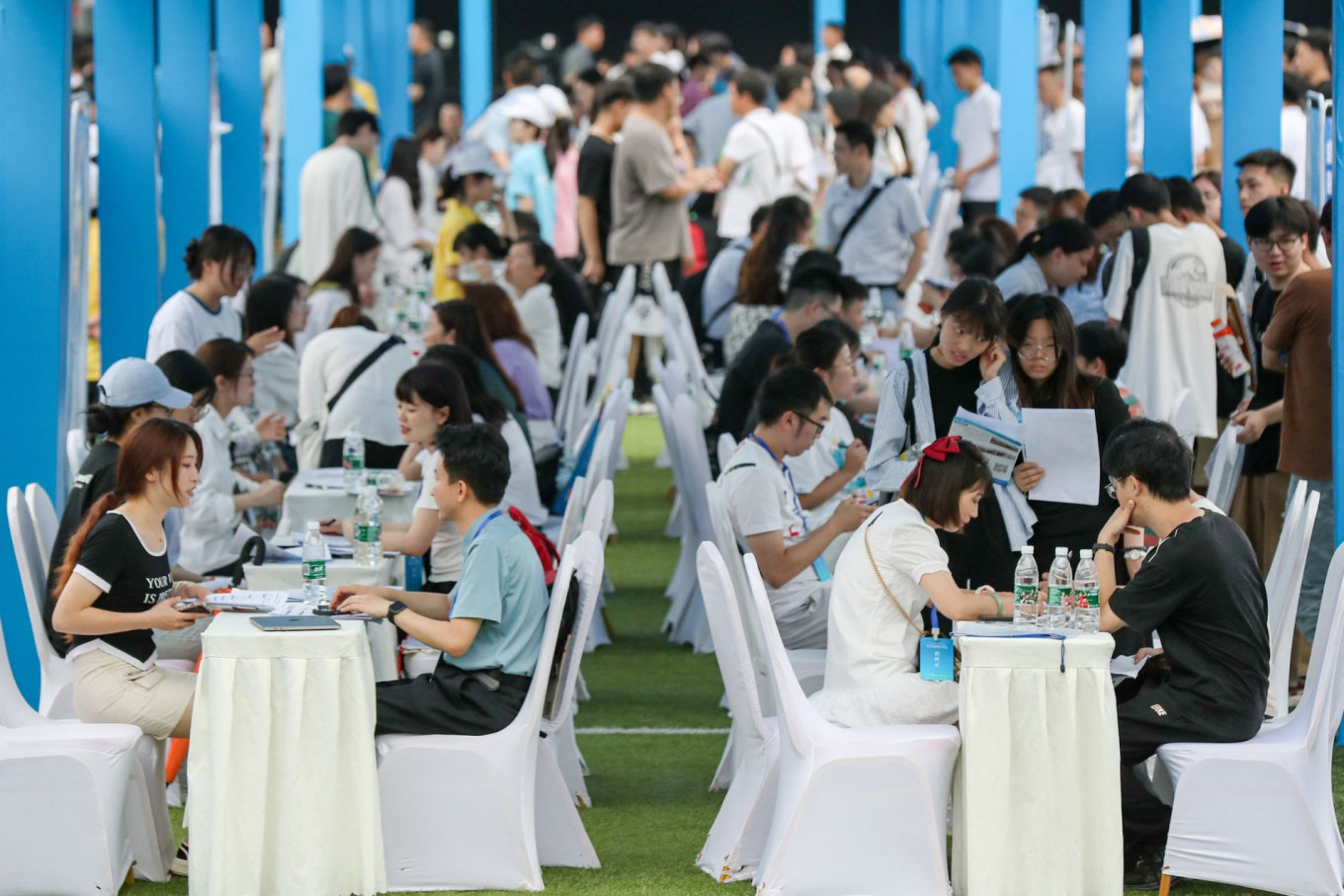Popular Reads
Top Results
Can't find what you're looking for?
View all search resultsPopular Reads
Top Results
Can't find what you're looking for?
View all search resultsThe vicious cycle of China’s demographics
The root problem is the relatively small number of jobs in China that provide a comfortable middle-class lifestyle, and the large number of workers vying for them
Change text size
Gift Premium Articles
to Anyone
D
uring the summer, one would expect mothers of rising sixth-graders to try to make whatever time they get to spend with their children as fun and relaxing as possible. Unfortunately, this is not the case in China, where mothers of rising middle-schoolers, and the children themselves, must wear themselves out in the summer months preparing for the coming academic year.
This is not an optional practice preoccupying only the most ambitious Chinese. It is a burden for almost all families because only the top half of all middle-school graduates are admitted to an academic high school, ensuring eligibility for university. Intense competition filters all the way down to elementary-school students. Teachers and schools are under pressure to deliver high rates of admission to academic high schools. To maximize the chances of success on an exam that will not take place until the ninth grade, many schools give incoming sixth-graders’ families course materials for the entire middle-school curriculum to work through over the summer.
The burden of teaching and cajoling the children to sit and study for hours each day falls disproportionately on mothers, many of whom may already have a demanding job. Chinese fathers traditionally contribute little to childcare, and the material is too difficult for most grandparents or other childcare providers. Many mothers even take online courses, recommended by their child’s school, to learn how to teach it. Regardless of whether a mother is a CEO or a grocer who already works 60-hour weeks, she is likely to spend her summer nights toiling away at middle-school geometry.
Little wonder that Chinese fertility rates have reached record lows, one child per woman in 2023, or that a growing share of young women do not want to become mothers. In one popular online survey, more than 60 percent of (mostly female) respondents, aged 18-35, said they do not want to be parents, citing the high costs of raising children, doubts about their children’s future economic prospects and the physical pain of childbirth.
These negative attitudes toward childbirth can translate into macroeconomic problems, because low fertility rates reduce the population share of working-age people. When this happened in Japan, its economy stagnated for at least a generation.
Not surprisingly then, Chinese policymakers are using every available policy tool to boost enthusiasm for parenthood among prospective mothers. Physical pain is the most straightforward problem to address. Epidural anesthesia is considered by medical professionals to be the most effective form of labor pain relief. Currently, it is only used in 30 percent of deliveries in China, compared with around 67 percent in the United States and Canada and 82 percent in France. To reduce the fear of childbirth among women, China’s National Health Commission has announced that all hospitals with more than 500 beds must offer epidurals by the end of this year, and hospitals with more than 100 beds must do so by 2027.
But not every concern of prospective mothers has an obvious remedy. The high costs of child-rearing and the lack of economic opportunities for those children when they grow up are particularly difficult problems to solve. Some 72 percent of respondents in the aforementioned survey believe that a household must earn between US$4,000 and $7,000 per month to be able to afford one child. But median household disposable income in 2024 amounted to just $572 per month in urban areas and just $228 in rural areas.



















